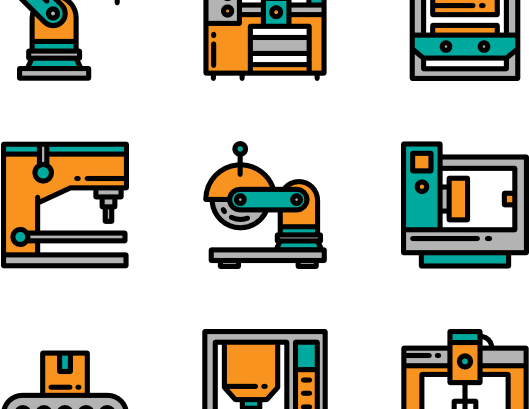And six things you should be doing from today
Far too many factories struggle with embarking on a digital transformation journey, because connecting to existing machines isn’t easy, why not?
For a few key reasons; firstly, they bought machines some time before they realised that they might want to get data out of them. Secondly, the suppliers of these machines (even though they’ve been paid for), don’t want to lose control of the machine or the customer… now that’s not really in the spirit of smart connected factories is it? And finally, because the machine was designed in such a way, that there’s no standardised computer interface to connect up to.
Many large companies of machines will charge you between £2,000 and £10,000 for the privilege of getting your data, out of your machine… so if you’ve got 20 machines… wow!
Everyone thinks that implementing Industry 4.0 or Smart Factories, is all about the software… and the marketing of such ‘platforms’ makes you think they can connect to anything… well give them a network cable and sure they can. But it’s not as simple as opening the cabinet door of a 20 yr old machine, chucking in a Cat5 cable and slamming the door quick…
Here are 3 key things to do (and don’t) right now to make your journey less painful:
- Don’t buy a machine without agreeing a specification for getting data out of it… and speak to a specialist to help you ask this question.
- Don’t buy a machine without getting access to the original source code of the computer system or PLC controlling it.
- Work with an independent specialist to help you set in-house specifications, and standards for data.
Get a plan for the data, not the software…
Many companies start their ‘digital’ journey with ‘this year’s’ business need… makes some sense, but I’d say stop. Why, well what happens is one department head (let’s say quality), embarks on a digital project to improve quality, implements a specialist data driven quality system, and connects up to some processes. Two years later another department head (let’s say finance), kicks-off a digital project to reduce energy costs, and buys a specialist energy monitoring system, and connects up to some equipment… this goes on, and the company ends up purchasing half a dozen different disparate systems, all with their own networks and data strategy, and much of it connecting to the same machines and processes.
If only someone had thought about the long term plan, came up with a method of connecting up all machines & processes, in a common, unified and standardised way, that all stakeholders in the business could get access to it, as the business needs changed.
TOP TIP: work with a partner who is independent and can help you agree standard naming and data conventions for your business and use this with all suppliers and future automation contractors.
INDEPENDENCE IS KEY: Try to keep open architecture, and use commonly available industry standards where possible.
So start the journey with the data, and you’ll have data that everyone can access, whatever software platforms suit your business needs best.
But how do you get data out of the machines already on the shop floor?
Everything is possible! even machines without PLCs or computers systems, will have data that can be extracted. There are several ways to connect to machines, depending on how old and computerised the machines is, and how cooperative or available, the original machine supplier is. Here are the most common ones:
- An agreed data interface such as OPC-UA, or fieldbus with open access agreed by your machine supplier (these are the best types of machine builder and should be applauded).
- Network protocol interfaces, often for older machines, where you have some access to a comms port on the machine.
- ‘Sensoring-up’ a very old machine… chances are you can measure anything, it’ll just take some work and some clever electrical and/or instrumentation engineers to help you.
And finally… 3 more tips:
- People: Get a team together, involve those on the shop floor, get someone to champion the cause… and find the right partner to work with
- Plan: Have a long term plan, and agree your in-house standards, and get the building blocks in place before you start
- Start small & Scale: with an easy project to demonstrate a return on investment, then scale up as the business evolves
Get in touch with Velocumen, if you need some advice… it’s not something we do, but we can point you to the right people.

